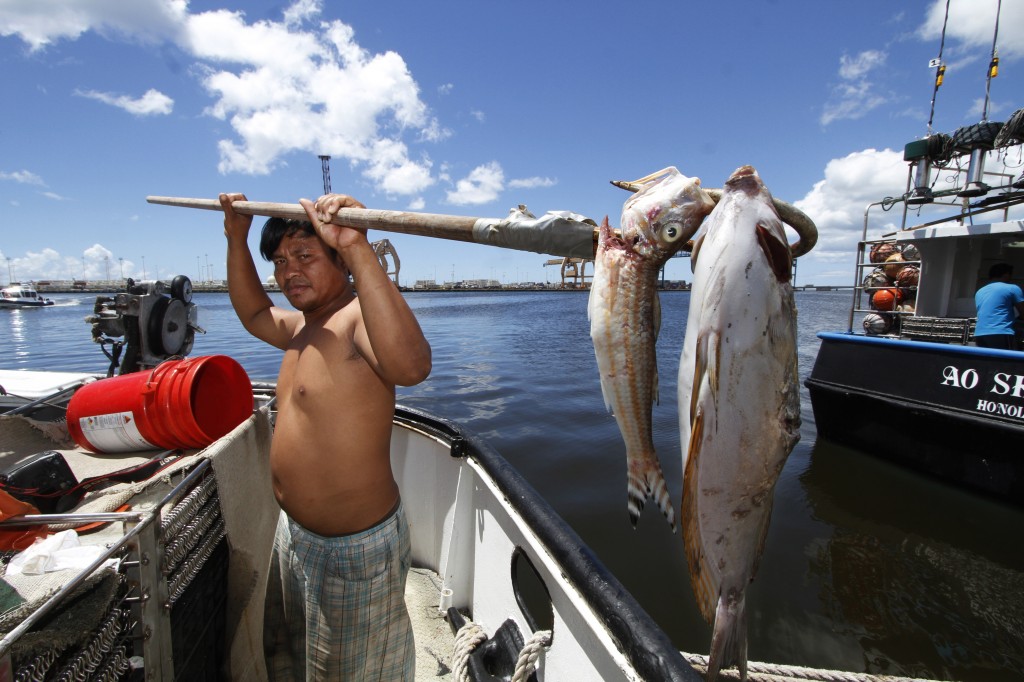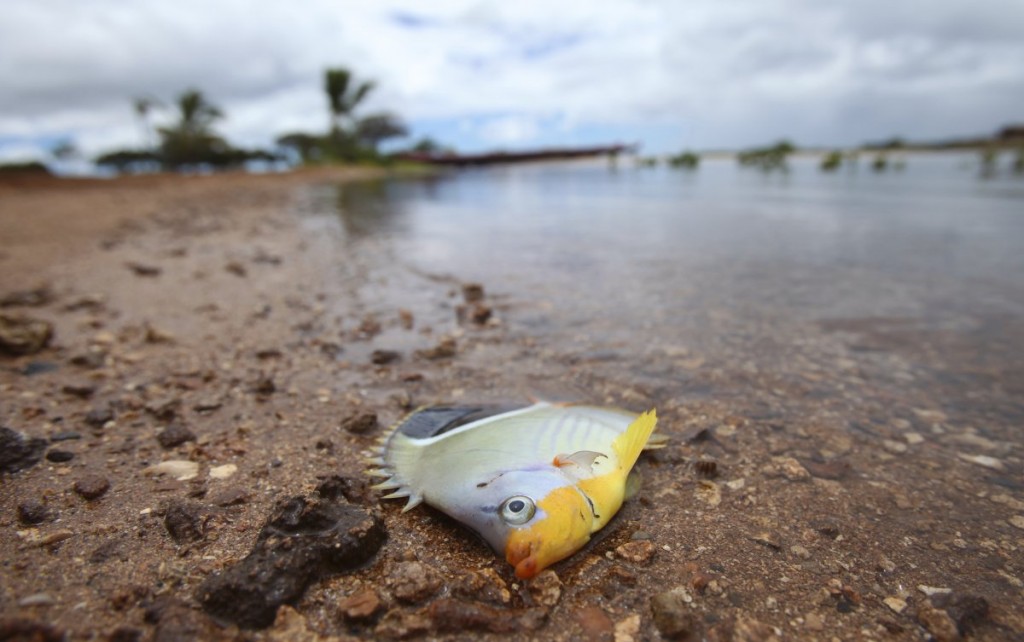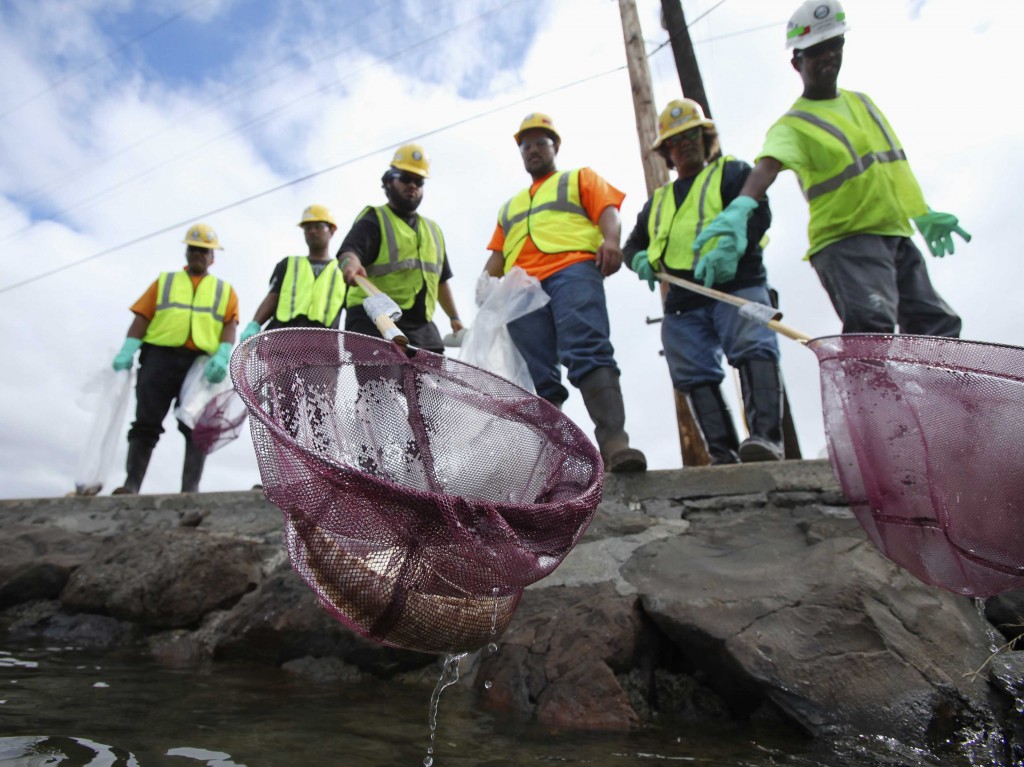Written by Andrew Baugh. Media by Mikey Courtney
On Tuesday, September 10th, a leak was discovered in a pipeline in the harbor of Honolulu. 233,000 gallons of treacle, also known as molasses, rose up through the sea—causing major pollution and killing hundreds of fish, with thousands more expected to perish. The high concentration of molasses makes it difficult for the fish to breathe causing the fatalities, state health department spokeswoman Janice Okubo reported to the Associated Press.
However, another predicament is arising due to this unexpected problem—aquatic predators could very well be attracted to the dead fish. “While molasses is not harmful to the public directly, the substance is polluting the water, causing fish to die and could lead to an increase in predator species such as sharks, barracuda and eels,” the state health department said in a statement. “The nutrient rich liquid could also cause unusual growth in marine algae, stimulate an increase in harmful bacteria and trigger other environmental impacts”. Health officials have warned swimmers, snorkelers, and surfers in the area to stay out of the water as a precaution for any possible attacks.

The leak in question came from a molasses pipeline controlled by Matson Navigation Company, the international ocean transport company. Matson admitted that the spill was caused by faulty equipment, which has since been repaired. The company expressed regret over the unfortunate incident and said that it is working closely with the Hawaiian government to make sure that problems like this are avoided in the future. “We take our role as an environmental steward very seriously,” Matson said in a statement. “We have a long history in Honolulu Harbor and can assure all involved that this is a rare incident in our longstanding Sand Island operation”.
This is a rare incident indeed. Vic Angoco, senior vice president for Matson’s Pacific operations, said that the company has been in working with the molasses business in the Honolulu harbor for nearly thirty years. “We take pride in being good stewards of the land, good stewards of the ocean, and in this case, we didn’t live up to our standards,” said Angoco. “And we are truly sorry for that, we’re truly sorry for that”.

Despite their long relationship, Angoco said that his company had no set plan for the possibility of a spill. State officials supported Matson and do not believe that the company was required to have any contingency plan. “All of us who care about the south shore of Oahu are sick about this,” Hawaiian U.S. Sen. Brian Schatz said. “But we don’t really know the status of the ecosystem and we won’t until we have scientists in the water collecting and analyzing data”.
Some cleanup efforts have been taking place. “To reduce the environmental impact in the harbor, DOH emergency response crews are actively collecting dead fish in the area today and will continue to do so for as long as necessary,” the DOH said. “Water samples are being collected by DLNR and DOH staff to monitor the movement of the plume and judge how long it will take to flush out to sea”. Only time will tell the true extent of this unanticipated disaster.
































